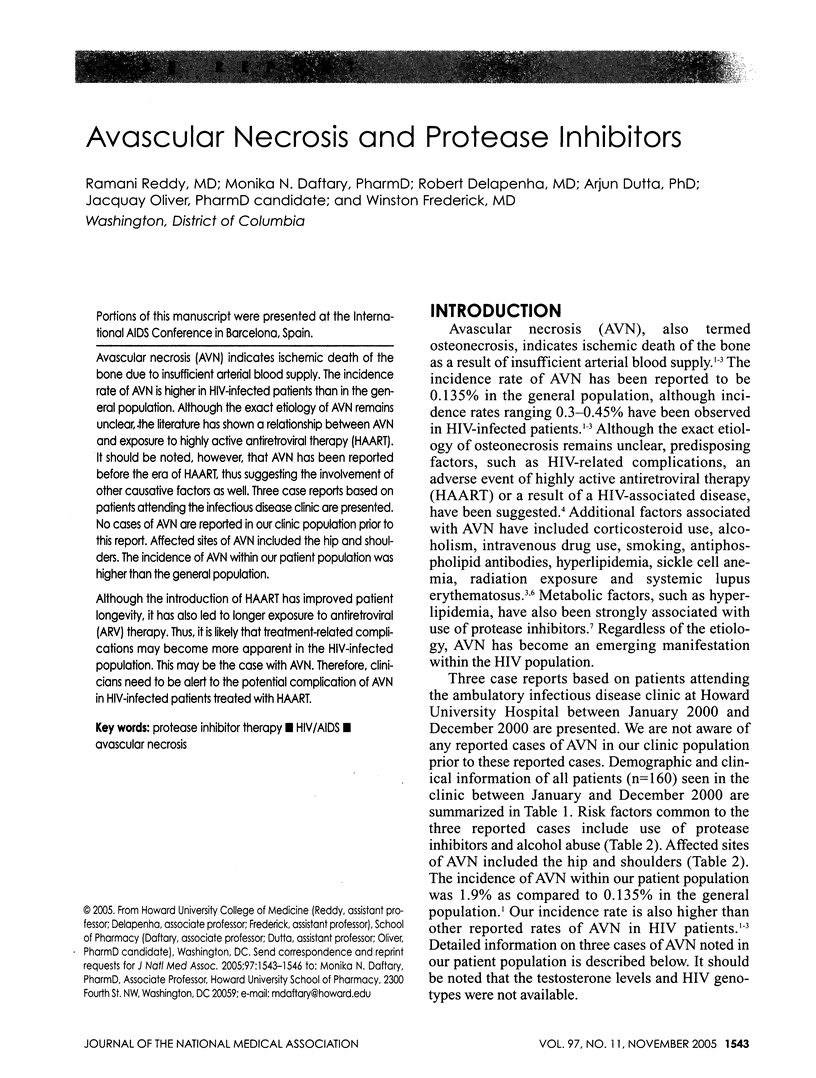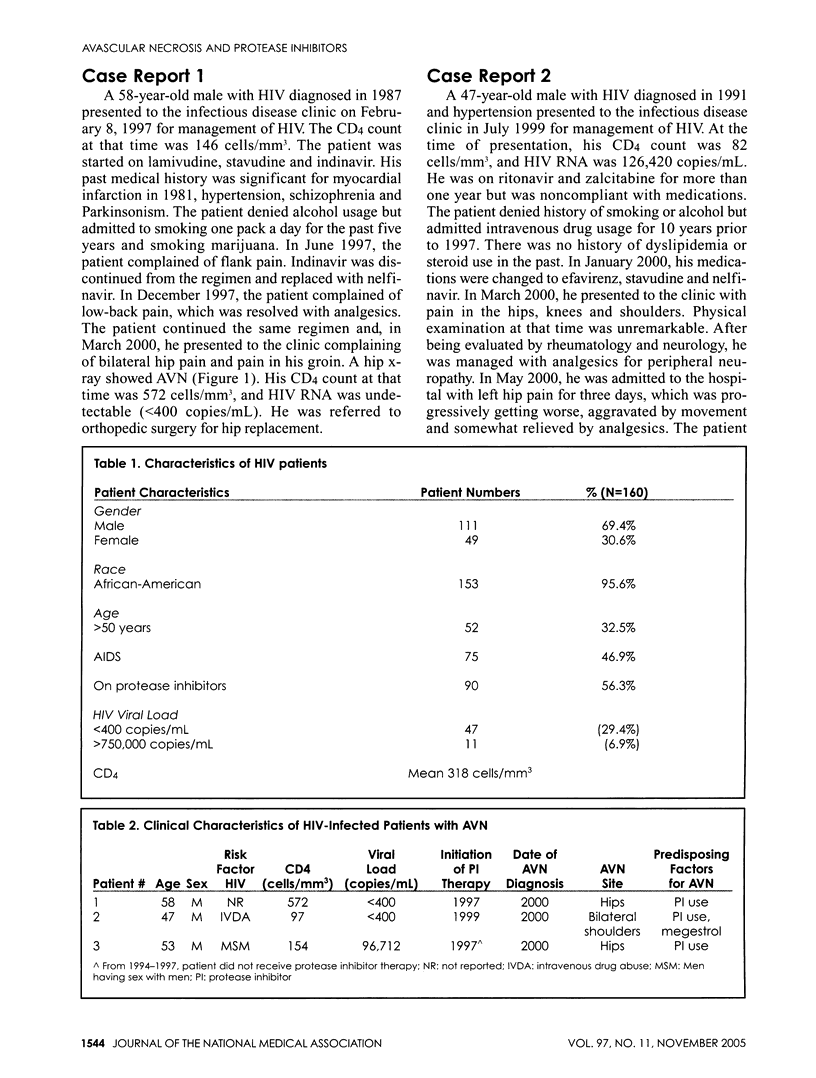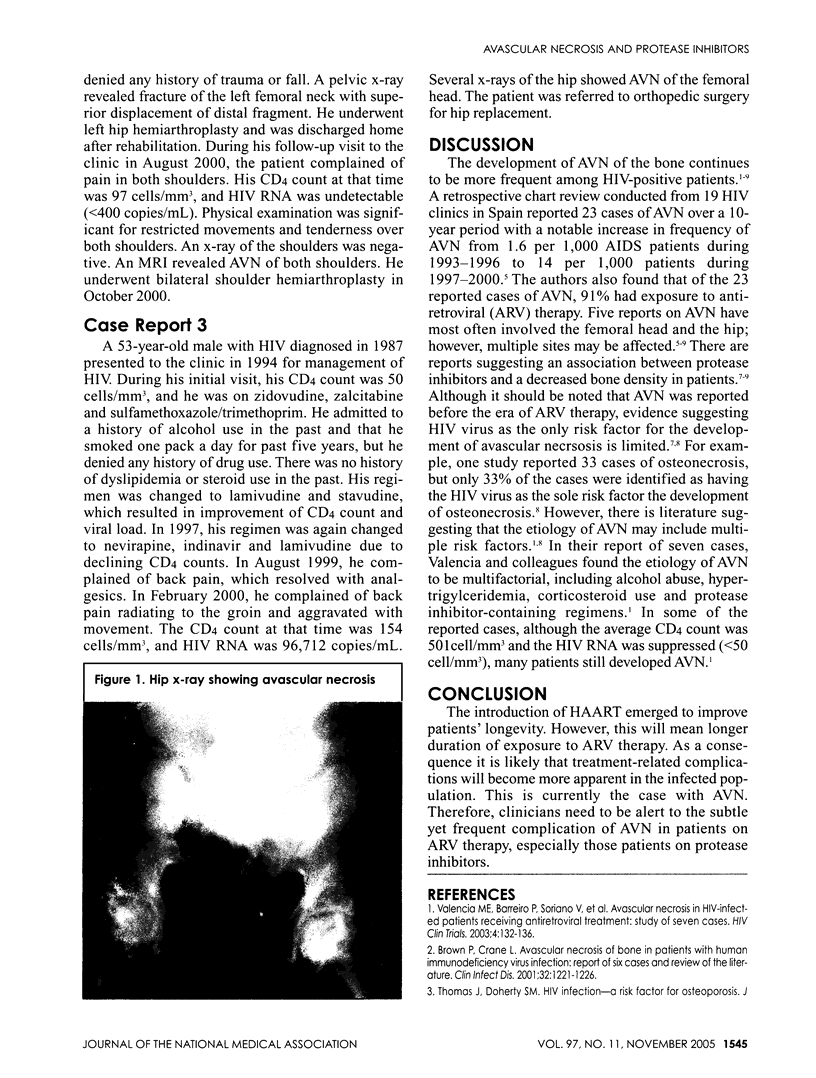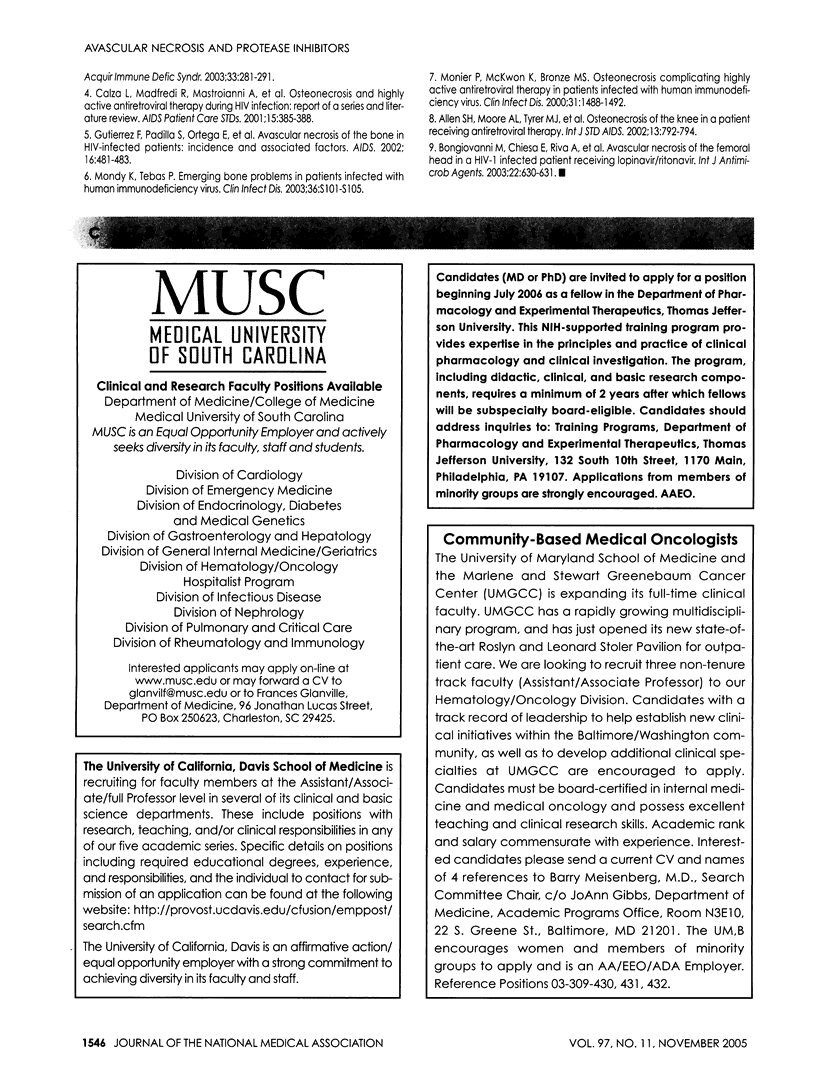Abstract
Avascular necrosis (AVN) indicates ischemic death of the bone due to insufficient arterial blood supply. The incidence rate of AVN is higher in HIV-infected patients than in the general population. Although the exact etiology of AVN remains unclear, the literature has shown a relationship between AVN and exposure to highly active antiretroviral therapy (HAART). It should be noted, however, that AVN has been reported before the era of HAART, thus suggesting the involvement of other causative factors as well. Three case reports based on patients attending the infectious disease clinic are presented. No cases of AVN are reported in our clinic population prior to this report. Affected sites of AVN included the hip and shoulders. The incidence of AVN within our patient population was higher than the general population. Although the introduction of HAART has improved patient longevity, it has also led to longer exposure to antiretroviral (ARV) therapy. Thus, it is likely that treatment-related complications may become more apparent in the HIV-infected population. This may be the case with AVN. Therefore, clinicians need to be alert to the potential complication of AVN in HIV-infected patients treated with HAART.
Full text
PDF



Images in this article
Selected References
These references are in PubMed. This may not be the complete list of references from this article.
- Allen S. H., Moore A. L., Tyrer M. J., Holloway B. J., Johnson M. A. Osteonecrosis of the knee in a patient receiving antiretroviral therapy. Int J STD AIDS. 2002 Nov;13(11):792–794. doi: 10.1258/095646202320753790. [DOI] [PubMed] [Google Scholar]
- Bongiovanni Marco, Chiesa Elisabetta, Riva Agostino, d'Arminio Monforte Antonella, Bini Teresa. Avascular necrosis of the femoral head in a HIV-1 infected patient receiving lopinavir/ritonavir. Int J Antimicrob Agents. 2003 Dec;22(6):630–631. doi: 10.1016/j.ijantimicag.2003.05.006. [DOI] [PubMed] [Google Scholar]
- Brown P., Crane L. Avascular necrosis of bone in patients with human immunodeficiency virus infection: report of 6 cases and review of the literature. Clin Infect Dis. 2001 Mar 26;32(8):1221–1226. doi: 10.1086/319745. [DOI] [PubMed] [Google Scholar]
- Calza L., Manfredi R., Mastroianni A., Chiodo F. Osteonecrosis and highly active antiretroviral therapy during HIV infection: report of a series and literature review. AIDS Patient Care STDS. 2001 Jul;15(7):385–389. doi: 10.1089/108729101750301933. [DOI] [PubMed] [Google Scholar]
- Gutiérrez Félix, Padilla Sergio, Ortega Enrique, García J. Adolfo, Flores Juan, Galera Carlos, Merino Esperanza, Masiá Mar, Roig Pablo, Boix Vicente. Avascular necrosis of the bone in HIV-infected patients: incidence and associated factors. AIDS. 2002 Feb 15;16(3):481–483. doi: 10.1097/00002030-200202150-00021. [DOI] [PubMed] [Google Scholar]
- Mondy Kristin, Tebas Pablo. Emerging bone problems in patients infected with human immunodeficiency virus. Clin Infect Dis. 2003 Apr 1;36(Suppl 2):S101–S105. doi: 10.1086/367566. [DOI] [PubMed] [Google Scholar]
- Monier P., McKown K., Bronze M. S. Osteonecrosis complicating highly active antiretroviral therapy in patients infected with human immunodeficiency virus. Clin Infect Dis. 2000 Nov 29;31(6):1488–1492. doi: 10.1086/317503. [DOI] [PubMed] [Google Scholar]
- Valencia Ma Eulalia, Barreiro Pablo, Soriano Vicente, Blanco Francisco, Moreno Victoria, Lahoz Juan González. Avascular necrosis in HIV-infected patients receiving antiretroviral treatment: study of seven cases. HIV Clin Trials. 2003 Mar-Apr;4(2):132–136. doi: 10.1310/8ew3-gyj9-08na-6d5h. [DOI] [PubMed] [Google Scholar]



